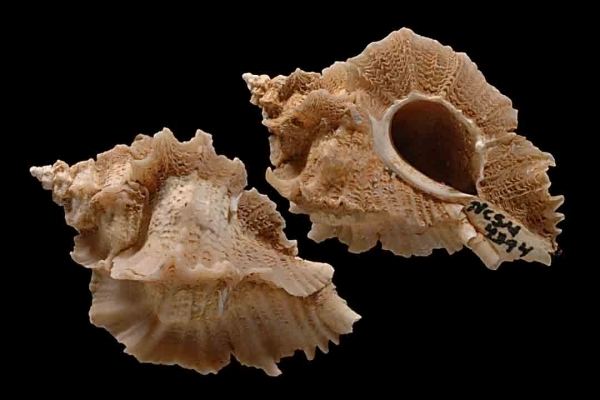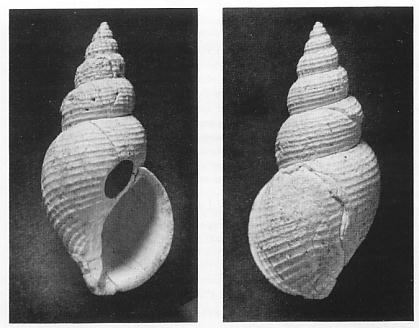Clade Hypsogastropoda Rank Order | Scientific name Neogastropoda Higher classification Gastropods | |
 | ||
Clade NeogastropodaWenz, 1938 Lower classifications | ||
Neogastropoda is an unranked taxonomic clade of sea snails, marine gastropod mollusks. For many years up to 2005, Neogastropoda was considered an order.
Contents

Description

The available fossil record of Neogastropoda is relatively complete, and supports a widely accepted evolutionary scenario of an Early Cretaceous origin of the group followed by two rapid diversification rounds in the late Cretaceous and the Paleocene.

These sea snails only have one auricle, one kidney and one monopectinate gill, i.e. the gill filaments develop on only one side of the central axis.

The shell has a well-developed siphonal canal. The elongated trunk-like siphon is an extensible tube, formed from a fold in the mantle. It is used to suck water into the mantle cavity. At the base of the siphon is the bipectinate (branching from a central axis) osphradium, a sensory receptacle and olfactory organ, that is more developed than the one in the Mesogastropoda. They achieved important morphological changes including e.g., the elongation of the siphonal canal, a shift in the mouth opening to a terminal position on the head, and the formation of a well-developed proboscis.
The nervous system is very concentrated. Many species have the ganglia in a compact space.
The rachiglossate (rasp-like) radula, a layer of serially arranged teeth within the mouth, has only three denticles (small teeth) in each transverse row.
The Neogastropoda have separate sexes.
There are about 16,000 species. Neogastropoda includes many well-known gastropods including the cone snails, conchs, mud snails, olive snails, oyster drills, tulip shells, and whelks. The Neogastropoda all live in the sea, except Clea, and Rivomarginella that are freshwater genera. The neogastropods are most diverse in tropical seas. They are mostly predators, but some are saprophagous (scavengers).
Taxonomy
According to the taxonomy of the Gastropoda by Bouchet & Rocroi (2005) the clade Neogastropoda consists of these superfamilies:
When Neogastropoda was an order, it was placed within the prosobranch gastropods according to the taxonomy developed by Thiele (1921). The families which used to form the order Neogastropoda are now included in the clade Neogastropoda Cox, 1960.
Ever since Thiele (1929), Neogastropoda have been considered a natural group, clearly differentiated from other Caenogastropoda. The monophyly of the group is widely accepted among morphologists, and it is based on several synapomorphies mostly related with the anatomy of the digestive system. Current classifications of Neogastropoda generally recognize up to six superfamilies: Buccinoidea, Muricoidea, Olivoidea, Pseudolivoidea, Conoidea, and Cancellarioidea. Phylogenetic relationships among neogastropod superfamilies based on morphological characters are rather unstable, and for instance, Cancellarioidea or Buccinoidea have been alternatively proposed as the sister group of the remaining Neogastropoda.
Families
According to the taxonomy of the Gastropoda by Bouchet & Rocroi (2005) the taxonomy of clade Neogastropoda is as follows:
